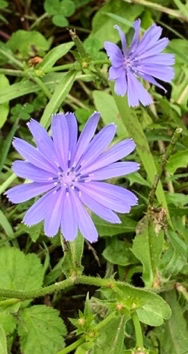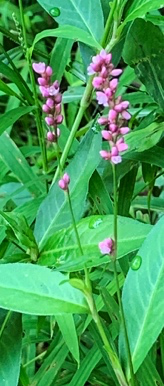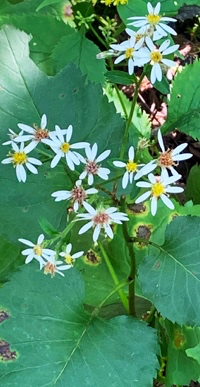The trail is now providing a mix of late summer and fall sightings. It’s a season with asters, goldenrods, and numerous other flowers, some of which have just opened and some of which have been flowering for many weeks (e.g., soapwort, daisy, knapweed). You’ll see three closely-related aster family plants: boneset, joe-pye-weed, and snakeweed (trivia note: Joe Pye was a Mohican chief who used this plant as a curative). It’s also a season of fruits and seeds; look for the conspicuous fruits of red baneberry, chokecherry, pokeweed, doll’s eyes, and wild grape. Animals consume the fruits, and the seeds are then dispersed by passing through the animals. With hooks on its seeds, burdock provides a mechanical form of seed dispersal by attaching to passing mammals. Jewelweed is also called touch-me-not because its ripe pods fly apart when touched (“explosive dehiscence”), yet another form of seed dispersal.
Birds are less obvious now than they have been for most of the summer, but the pond often provides surprises; this morning (Aug 30) I found a kingfisher, GB heron, and 3 wood ducks, and several days ago I saw a solitary sandpiper. Monarch caterpillars have been scarce along the trail this summer – all monarchs should be migrating southward now – but you can still find fuzzy caterpillars of the milkweed tussock moth on partially eaten milkweed leaves. You’ll also find hops along the trail, thus providing a connection to the region’s history of hops production. Don’t wait to take a nature walk; the growing season is clearly passing.































